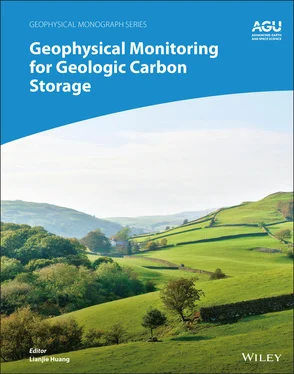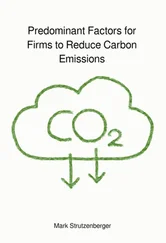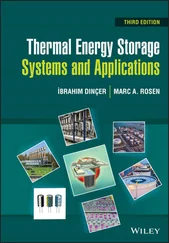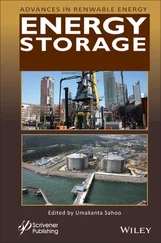Geophysical Monitoring for Geologic Carbon Storage
Здесь есть возможность читать онлайн «Geophysical Monitoring for Geologic Carbon Storage» — ознакомительный отрывок электронной книги совершенно бесплатно, а после прочтения отрывка купить полную версию. В некоторых случаях можно слушать аудио, скачать через торрент в формате fb2 и присутствует краткое содержание. Жанр: unrecognised, на английском языке. Описание произведения, (предисловие) а так же отзывы посетителей доступны на портале библиотеки ЛибКат.
- Название:Geophysical Monitoring for Geologic Carbon Storage
- Автор:
- Жанр:
- Год:неизвестен
- ISBN:нет данных
- Рейтинг книги:4 / 5. Голосов: 1
-
Избранное:Добавить в избранное
- Отзывы:
-
Ваша оценка:
- 80
- 1
- 2
- 3
- 4
- 5
Geophysical Monitoring for Geologic Carbon Storage: краткое содержание, описание и аннотация
Предлагаем к чтению аннотацию, описание, краткое содержание или предисловие (зависит от того, что написал сам автор книги «Geophysical Monitoring for Geologic Carbon Storage»). Если вы не нашли необходимую информацию о книге — напишите в комментариях, мы постараемся отыскать её.
Geophysical Monitoring for Geologic Carbon Storage
Volume highlights include: Geophysical Monitoring for Geologic Carbon Storage
The American Geophysical Union promotes discovery in Earth and space science for the benefit of humanity. Its publications disseminate scientific knowledge and provide resources for researchers, students, and professionals.
Geophysical Monitoring for Geologic Carbon Storage — читать онлайн ознакомительный отрывок
Ниже представлен текст книги, разбитый по страницам. Система сохранения места последней прочитанной страницы, позволяет с удобством читать онлайн бесплатно книгу «Geophysical Monitoring for Geologic Carbon Storage», без необходимости каждый раз заново искать на чём Вы остановились. Поставьте закладку, и сможете в любой момент перейти на страницу, на которой закончили чтение.
Интервал:
Закладка:
In Chapter 9on walkaway VSP monitoring, Wang et al. apply reverse‐time migration (RTM) to time‐lapse walkaway VSP data acquired at the SACROC CO 2‐EOR field in Scurry County, Texas, USA, to reveal changes in the reservoir caused by CO 2injection and migration. Before they apply RTM to the data, they perform statics correction and amplitude balancing to the time‐lapse walkaway VSP data sets. To mitigate the image artifacts caused by the limited subsurface seismic illumination of the walkaway VSP surveys, they analyze and process the RTM images in the angle domain to greatly improve the image quality.
Because of limited seismic illumination of VSP surveys, migration imaging of VSP data often contains significant image artifacts, which can be alleviated using an angle‐domain imaging condition. This alleviation is tedious if not impossible for 3D VSP data. 3D least‐squares reverse‐time migration (LSRTM) is an alternative approach to addressing such a problem. To demonstrate the improved imaging capability of 3D LSRTM of 3D VSP data, Tan et al., in Chapter 10, apply the method to a portion of the 3D VSP data acquired at the Cranfield CO 2‐EOR field in Mississippi, USA, for monitoring CO 2injection to obtain a high‐resolution 3D subsurface image. LSRTM solves for a reflectivity model by minimizing the difference between the observed data and modeled data. The advantages of LSRTM over RTM of VSP data include: (1) LSRTM significantly improves the spatial resolution of the layer images, and (2) LSRTM extends the horizontal imaging region to areas that cannot be imaged using RTM.
Besides time‐lapse seismic imaging, quantifying changes of subsurface geophysical properties caused by CO 2injection/migration can provide crucial information of CO 2plumes. In Chapter 11, Lin et al. present a double‐difference seismic‐waveform inversion method to jointly invert time‐lapse seismic data for reservoir changes of elastic parameters. Inverting individual time‐lapse seismic data sets separately may result in significant inversion artifacts and inaccurate inversion results. Double‐difference acoustic‐ or elastic‐waveform inversion constrains time‐lapse seismic data sets with each other to improve the robustness of inversion of time‐lapse changes and reduce inversion artifacts. In Lin et al.'s double‐difference seismic‐waveform inversion methods, they employ an energy‐weighted preconditioner, a spatial priori information (target monitoring regions), and a modified total‐variation regularization scheme to improve the inversion accuracy of changes of subsurface geophysical properties. They validate the method using time‐lapse walkaway VSP data acquired at the SACROC CO 2‐EOR field, and reveal the velocity decrease in the geologic formation where CO 2was injected.
Multicomponent seismic surveys acquire not only compressional‐wave signals, but also shear‐wave signals that carry useful information for high‐resolution subsurface site characterization and monitoring. When using shear‐wave sources, the multicomponent seismic surveys record the full nine‐component elastic wavefields, which are the most complete seismic data. Such data contain compression‐to‐compression and shear‐to‐shear waves in addition to converted waves including compression‐to‐shear and shear‐to‐compression waves. Multicomponent seismic data are far more sensitive to fracture zones than compressional‐wave data, allowing improved characterization/monitoring of potential leakage pathways or preferential flow directions compared with one‐component data. In Chapter 12, on site characterization using multicomponent seismic data, DeVault et al. describe joint inversion of multicomponent seismic data for deriving elastic parameters from multicomponent data and demonstrate the unique advantages for geophysical CO 2reservoir characterization. They present results of joint inversion for characterizing the Duperow CO 2‐bearing zone at Kevin Dome, Montana, USA. They demonstrate that the additional amplitude and polarization information contained in multicomponent data allows for the estimation of shear impedance, density, and azimuthal anisotropic parameters with much greater accuracy than using compressional‐wave seismic data.
In Chapter 13, Mur et al. develop forward modeling workflows for predicting fluid and pressure effects resulting from supercritical CO 2(scCO 2) injection in a sandstone reservoir using 4D reflection seismic data and well logs. They use a 3D prestack seismic data set, two 3D seismic poststack volumes, and a wireline log from the sandstone reservoir, to perform forward modeling and predict reservoir seismic response of fluid substituted CO 2as a component of the pore‐filling fluid mix in a reservoir unit. They use time‐lapse 3D seismic data acquired before and after CO 2injection and postinjection common midpoint stacks to determine regions of possible fluid density and pore pressures signatures. The lateral changes in amplitude versus offset (AVO) can be an indicator of pore‐filling fluid changes. They implement the Aki‐Richards method to model reflected wave amplitudes at increasing offset angles on time‐lapse prestack seismic data from the Cranfield Field, Mississippi, USA. They present results on the effects of seismic‐wave reflectivity caused by the injection of CO 2in a sandstone reservoir at Cranfield, and predict the fluid effects of CO 2presence in the reservoir by applying fluid substitutions to produce reservoir property models and compare these effects with an actual 4D seismic survey.
1.4. SUBSURFACE NONSEISMIC MONITORING
Migration of CO 2at a geologic carbon storage site causes subsurface mass redistribution. Lower density CO 2displaces higher density brine, which results in reduction of the bulk formation density. Time‐lapse gravity monitoring is sensitive to the bulk density changes. Gravity sensors can be deployed on the ground surface or in a borehole or on the seafloor. When CO 2is present at a subsurface depth of greater than 700 m, CO 2exists in a supercritical state and its density ranges from 0.25 to 0.70 g/cm 3. The density contrast between brine and CO 2in a CO 2storage site is often less than 0.5 g/cm 3.
In Chapter 14, Appriou and Bonneville introduce the gravity method and discuss its modeling and application to various geologic carbon storage sites. Detection of gravity variations accompanying mass redistributions in the subsurface caused by fluid movements in reservoirs provides a unique means to monitor the dynamics of a carbon sequestration site. With the recent advancement in instrument capabilities, the gravity method provides a promising monitoring technique.
Because a CO 2storage reservoir is often located at a large depth and spatial resolution of gravity surveys decreases with the depth, there are often limited applications that land surface gravity surveys can provide. To improve the plume resolution, a gravimeter must be located closer to a CO 2plume, either in a borehole or on the seafloor for an offshore geologic carbon storage site. There have been only two gravity monitoring applications at commercial‐scale CO 2storage sites. A seafloor gravity monitoring survey was performed at the Sleipner CO 2storage site in Norway. The high repeatability of 1.1–4.3 μGal in gravity measurements was achieved in a dynamic seafloor environment. Hydrocarbon production is another source of reservoir density change and complicates the gravity interpretation. The gravity anomaly reached tens of μGal after injection of 18 MMT CO 2. Gravity monitoring estimated that the mass of CO 2in the storage reservoir agrees with the injected CO 2mass without leakage.
Compared with seismic monitoring, gravity monitoring is more cost‐effective and may be deployed between repeated seismic surveys if the model predicts a measurable gravity response. Downhole and seafloor gravity monitoring of deep CO 2storage is more effective than surface gravity surveys, which may be better suited for monitoring shallow CO 2leakage.
Читать дальшеИнтервал:
Закладка:
Похожие книги на «Geophysical Monitoring for Geologic Carbon Storage»
Представляем Вашему вниманию похожие книги на «Geophysical Monitoring for Geologic Carbon Storage» списком для выбора. Мы отобрали схожую по названию и смыслу литературу в надежде предоставить читателям больше вариантов отыскать новые, интересные, ещё непрочитанные произведения.
Обсуждение, отзывы о книге «Geophysical Monitoring for Geologic Carbon Storage» и просто собственные мнения читателей. Оставьте ваши комментарии, напишите, что Вы думаете о произведении, его смысле или главных героях. Укажите что конкретно понравилось, а что нет, и почему Вы так считаете.












